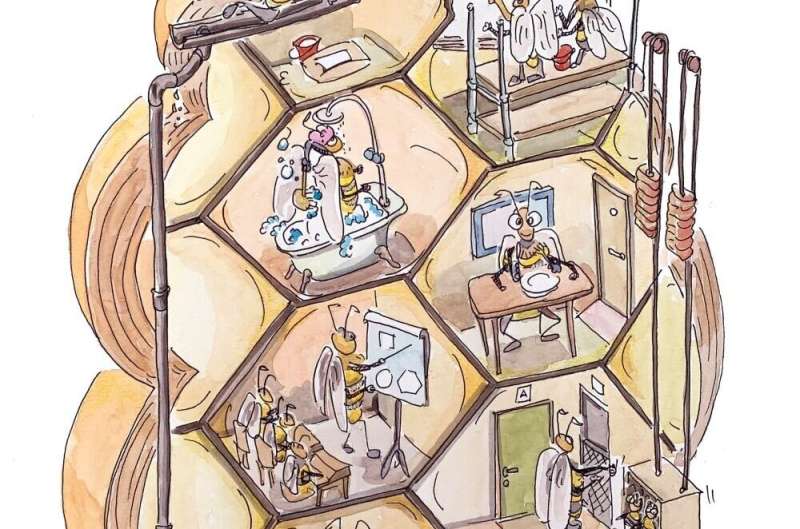Honey bee behavior from within the hive

Unique video from within beehives provides special insight into honey bee behaviors, according to a study published March 17, 2021 in the open-access journal PLOS ONE by Paul Siefert from Goethe-Universität, Germany, and colleagues.
Though the European honey bee (Apis mellifera) famously lives in large and complex colonies, it's the collective behavior of the hive's unique individuals that determines the colony's success—behaviors such as nest building, foraging, storing and ripening food, brood nursing, temperature regulation, hygiene, or hive defense. Most of these activities happen within the structure of the hive itself and aren't easily observable—but in this study, Siefert and colleagues were able to video record individual honeycomb frames and even cells from within special glass-framed observation hives, providing new insights into honey bee behavior at the individual level.
For these videos, the authors continuously recorded truncated honeycomb cells within the brood area of their observation hives with the frames turned 90 degrees for visibility, permitting a sideways view into the cells in the middle of the colony.
The recordings show a range of worker, offspring, and queen behaviors within the brood cells, including the queen's egg laying; embryonic hatching and larval cocooning; nurse worker bees' inspection and feeding of larva; workers' use of wax scales and existing nest material to remodel combs; storage of pollen and nectar in cells; and hygienic practices, such as cannibalism, grooming and surface cleaning. Additionally, Siefert and colleagues captured several processes previously undocumented, such as mouth-to-mouth feeding from nurse bees to larvae as well as nurse bee thermoregulation within cells containing the developing brood prompting the descent of eggs within their comb cells.
The wealth of video recordings providing specific instances of honeybee behavior will prove insightful for scientists as well as beekeepers and the general public. The authors especially hope their material will help raise awareness of the critical declines in pollinator and bee populations, and encourage the use of their work for educational purposes.
The authors add: "In this study, the authors provide a comprehensive source of online video material that offers a view of honey bee behavior within comb cells of a functioning colony. By providing a new mode of observation for the scientific community, beekeepers, and the general public the authors call attention to the general decline of insect biomass and diversity."
More information: Siefert P, Buling N, Grünewald B (2021) Honey bee behaviours within the hive: Insights from long-term video analysis. PLoS ONE 16(3): e0247323. doi.org/10.1371/journal.pone.0247323
Journal information: PLoS ONE
Provided by Public Library of Science




















